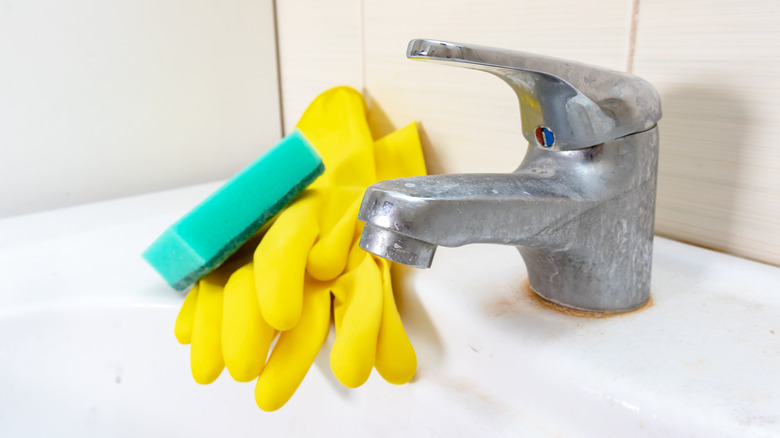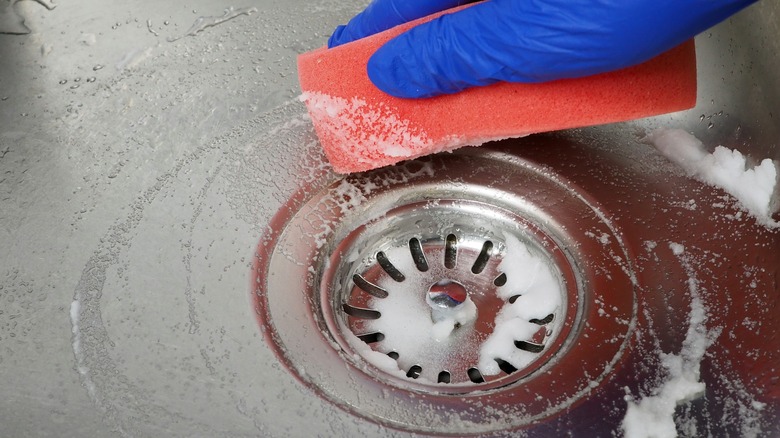The Cleaning Staple That'll Zap Rust Around The Home
If there is one thing that has the power to tarnish the pristine look of cleanliness, it's rust. The unsightly reddish-brown marks are impossible to overlook, catching the eye in the worst way. Whether on metal surfaces or water fixtures, rust can ruin the visual allure of anything it touches. However, there is hope for restoration, as a simple cleaning hack using hydrogen peroxide can banish these unforgiving rust stains and revive the beauty that was once present.
Rust is a byproduct that naturally occurs when iron or steel is exposed to oxygen and water. Surprisingly, even without direct water contact, oxidation can still occur due to the moisture present in the air we breathe. This poses a considerable challenge in preventing this chemical reaction. However, an effective, homemade hydrogen peroxide solution works to break down the iron oxide molecules that form. By preparing a mixture of cream of tartar, baking soda, and hydrogen peroxide, rust stains can be successfully eliminated. Here's how it's done.
Ridding rust with an iron-ic twist
To create a powerful, DIY rust removal solution, combine equal parts of cream of tartar and baking soda in a dish. Add a splash of hydrogen peroxide and mix well to form a paste. Once ready, generously apply the paste directly onto the rust stain. Allow the mixture to sit for approximately 30 minutes to one hour, letting it penetrate and dissolve the stubborn rust. After the designated time has passed, thoroughly rinse the area with water to remove the paste and any remnants of rust. Finally, gently pat the surface dry to reveal a rust-free and revitalized finish.
When using this hydrogen peroxide hack, minimizing prolonged contact between the solution and metal surfaces is best. After applying the paste and allowing it to sit, promptly rinse the area with water to remove any residue. Additionally, it's important to consider the compatibility of different metals with hydrogen peroxide. While stainless steel and aluminum can withstand the corrosive properties, metals like copper or zinc should not be exposed to the solution, as it may result in discoloration or other unwanted reactions. Furthermore, it is advisable to thoroughly dry metal surfaces both before and after using hydrogen peroxide. The presence of water can accelerate the reaction between metal and hydrogen peroxide, potentially causing additional damage or oxidation. By following these precautions, you can effectively maintain the integrity and longevity of your metal surfaces.

